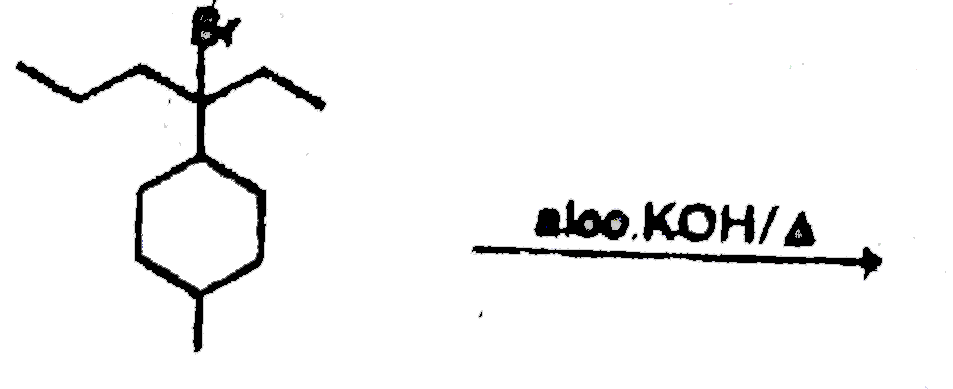How many plants given below possesses unisexual flowers ?
Cucumber , maize, papaya , castor , Cycas, date palm.
4
5
6
3
The correct Answer is:C
To determine how many of the given plants possess unisexual flowers, we need to analyze each plant one by one.
1. Understanding Unisexual Flowers:
- Unisexual flowers are those that contain either male (stamens) or female (carpels) reproductive structures, but not both.
2. List of Plants:
- The plants we need to evaluate are: Cucumber, Maize, Papaya, Castor, Cycas, and Date Palm.
3. Evaluating Each Plant:
- Cucumber: Cucumber plants have unisexual flowers. They produce both male and female flowers on the same plant.
- Maize: Maize (corn) has unisexual flowers. The tassels are male flowers, and the ears are female flowers.
- Papaya: Papaya plants can have male, female, or hermaphrodite flowers, but the male and female flowers are unisexual.
- Castor: Castor plants have unisexual flowers. They produce male and female flowers on the same plant.
- Cycas: Cycas plants are gymnosperms and have unisexual reproductive structures. Male and female cones are produced separately.
- Date Palm: Date palms also have unisexual flowers. Male and female flowers are produced on separate plants.
4. Counting the Unisexual Flowers:
- All six plants listed (Cucumber, Maize, Papaya, Castor, Cycas, Date Palm) possess unisexual flowers.
5. Conclusion:
- Therefore, the total number of plants that possess unisexual flowers is 6.
Final Answer:
The number of plants that possess unisexual flowers is 6.
- Unisexual flowers are those that contain either male (stamens) or female (carpels) reproductive structures, but not both.
- The plants we need to evaluate are: Cucumber, Maize, Papaya, Castor, Cycas, and Date Palm.
- Cucumber: Cucumber plants have unisexual flowers. They produce both male and female flowers on the same plant.
- Maize: Maize (corn) has unisexual flowers. The tassels are male flowers, and the ears are female flowers.
- Papaya: Papaya plants can have male, female, or hermaphrodite flowers, but the male and female flowers are unisexual.
- Castor: Castor plants have unisexual flowers. They produce male and female flowers on the same plant.
- Cycas: Cycas plants are gymnosperms and have unisexual reproductive structures. Male and female cones are produced separately.
- Date Palm: Date palms also have unisexual flowers. Male and female flowers are produced on separate plants.
- All six plants listed (Cucumber, Maize, Papaya, Castor, Cycas, Date Palm) possess unisexual flowers.
- Therefore, the total number of plants that possess unisexual flowers is 6.
The number of plants that possess unisexual flowers is 6.
Similar Questions
All plants given below produce many seeded fruits, except
View SolutionHow many plants in the given below are pollinated by water ?
Vallisneria , Zostera , water hyacinth , water lily , coconut , yucca , Hydria , Ficus
View SolutionHow many plants in the list given below are insect - pollinated plants ?
Sunflower , Coconut , water lily, water hyacinth , Vallisneria , Ophrys , papaya , cotton , Banana, Adansonia , Bombax ,Bamboo , wheat , Hydrilla .
View SolutionHow many plants in the list given below are wind - pollinated plants ?
Coconut , Vallisneria , Ophrys, Amorphophallus, Commelina, bamboo, wheat , rice , Yucca.
View SolutionHow many alkenes are possible in the given below reaction ?

View SolutionHow many times flowering takes place in biennial plants :-
View SolutionHow many of the plants given below are comes under family Liliaceae- Aloe, Asparagus, Tulip, Gloriosa, Colchicum
View SolutionPlants like papaya and date palm show
View SolutionList some of the plants are given below. How many plant /s/is/ are vascular and monoecious ?
Chara, pinus , Cycas , Sphagnum , Maize, Papaya
View SolutionEntry of pollen tube into the ovule through chalaza was first discovered by Treub in a xerophytes. This plant is associated with a pair of characters given below (i) unisexual flowers ( ii) sessile flowers (iii) centripetal arrangement of flowers (iv) bisexual flowers. The correct pair is
View Solution
